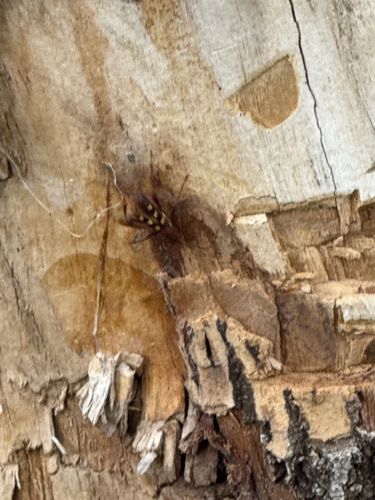Crane Fly
Scientific Name: Tipulidae
Order & Family: Diptera (True Flies), Tipulidae (Crane Flies)
Size: Typically 2 to 100 mm in body length, with leg spans potentially much larger.

Natural Habitat
Moist environments such as marshes, swamps, riverbanks, damp woodlands, and areas with decaying plant matter. Larvae are aquatic or semi-aquatic, or terrestrial in damp soil.
Diet & Feeding
Adult crane flies generally feed on nectar, decaying plant matter, or do not feed at all. Larvae, known as 'leatherjackets' or 'grub worms', are primarily detritivores, feeding on decaying organic matter, roots, and sometimes small invertebrates.
Behavior Patterns
Adults are often seen flying clumsily, particularly at dusk or near lights. They are known for their long, fragile legs, which are easily detached. Larvae are found in soil or water, feeding and developing over several instars before pupating.
Risks & Benefits
Generally harmless to humans. While some larvae can cause minor damage to turfgrass and shallow-rooted plants by feeding on roots (acting as a pest in lawns and crops), adults are not pests. They can serve as a food source for other animals (birds, bats, fish). Larvae also play a role in decomposition and nutrient cycling in their habitats.
Identified on: 9/13/2025